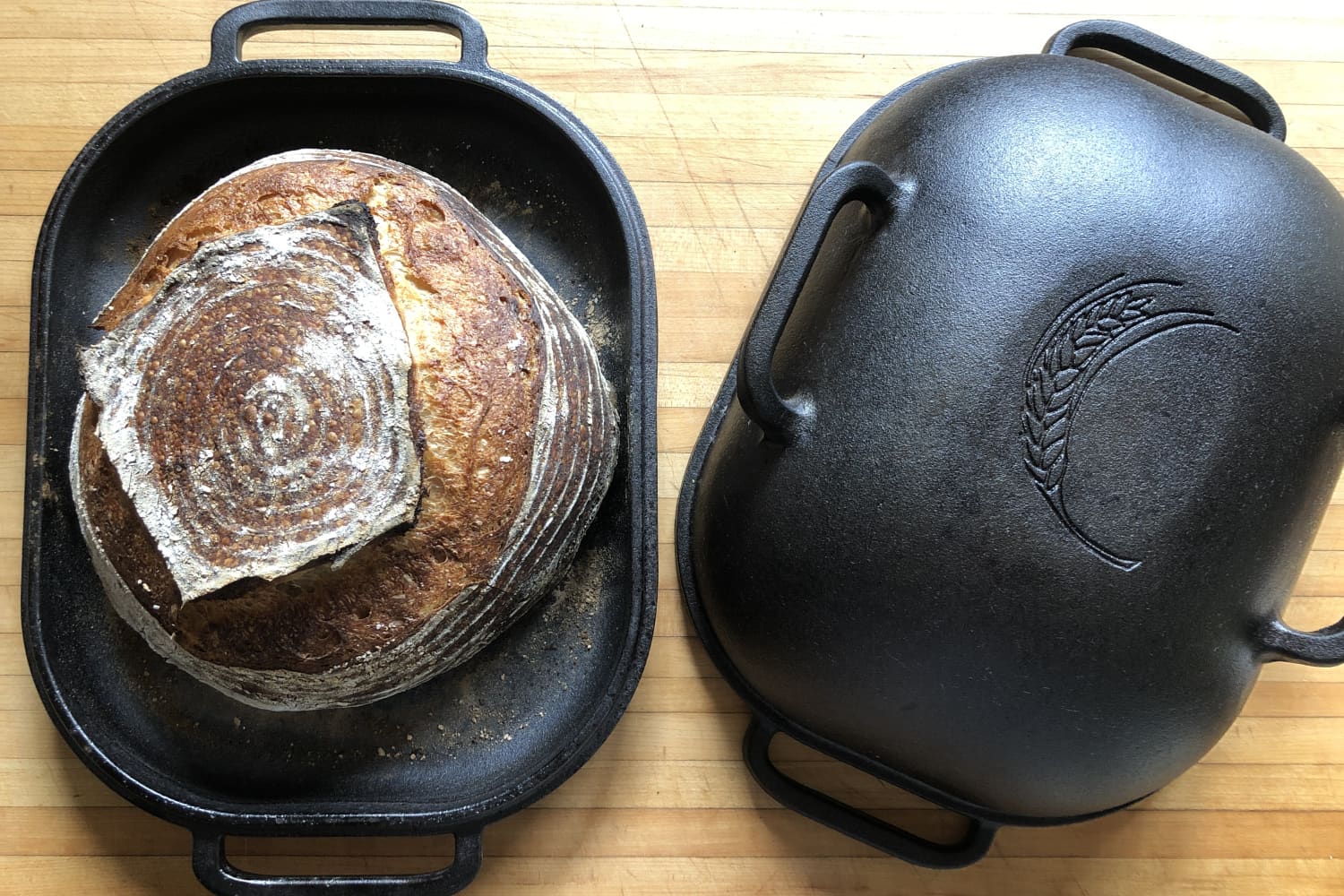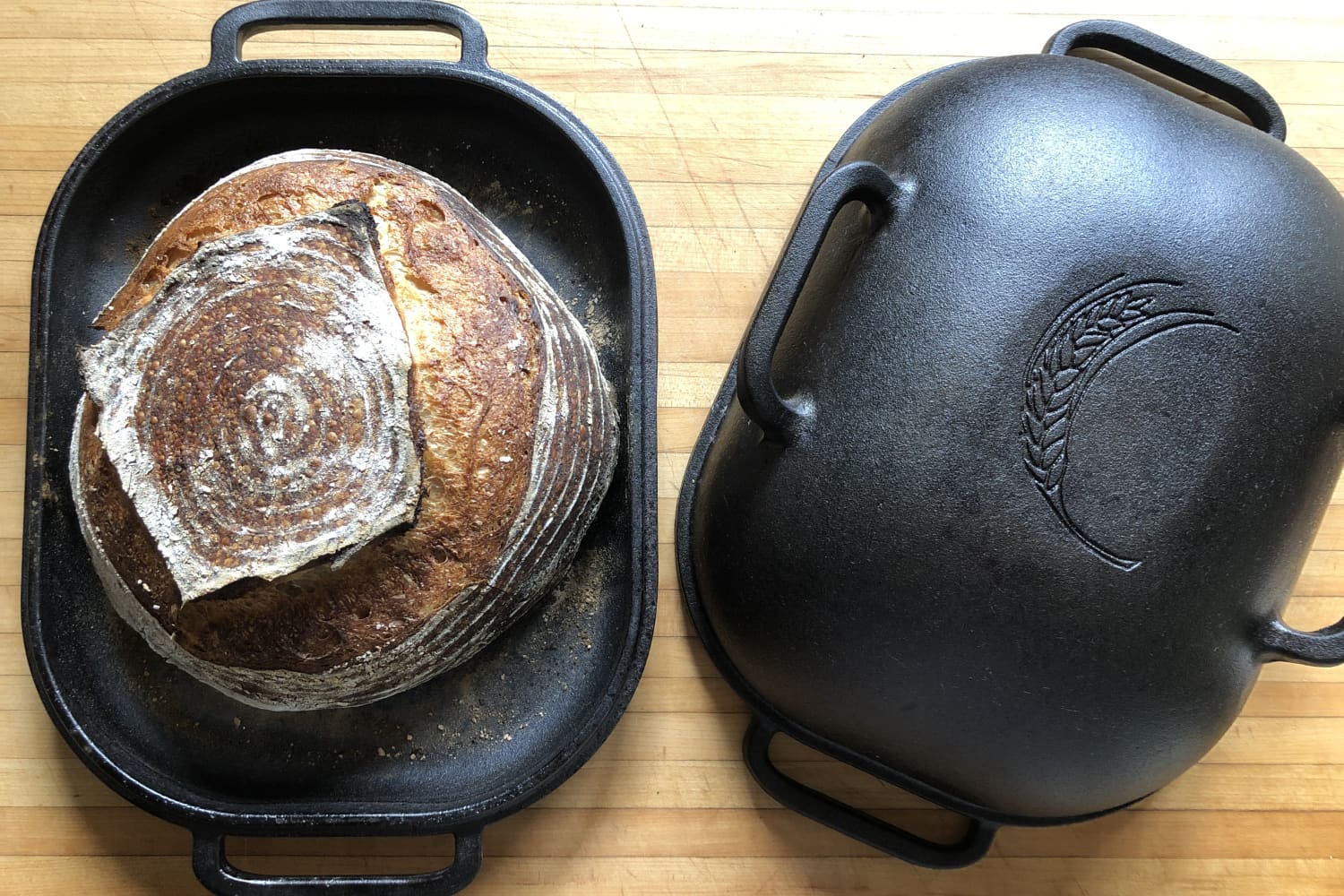Products You May Like

We independently select these products—if you buy from one of our links, we may earn a commission.
Some cooking projects are so hands-on, so riddled with variables, that they become a craft — an obsession that takes up your weekends and inspires pages of notes as you hone your skills (think: barbecue, house-cured charcuterie, and, of course, bread).
Attempting to master these kinds of things takes practice, patience, and a certain leveling up in your investment of time and equipment. After baking artisan bread on a near-weekly basis for about two years, I was definitely ready to upgrade my usual cast iron Dutch ovens.
Don’t get me wrong: My Staub and Lodge Dutch ovens offer great heat retention and tight-fitting lids that trap steam (two important factors for a dark, crackly crust). But when it comes to bread baking, they’re not without their flaws. And when you bake bread weekly, those flaws loom large.
First of all, I like to turn my dough out of the proofing basket right into the preheated pot — that way I don’t need parchment to lift it in and out. But that makes scoring the top challenging in my Staub because of the high sides. The Lodge Double Dutch solves this problem because I use the flat, knob-less lid as the base and set the pot over the loaf like a domed lid. Trouble is, the handles end up close to the oven rack, which makes it hard to remove the top for the second half of the bake. Plus, its round shape means I can only make boules.
When I saw the Challenger Bread Pan, with its inverted pot format, generous oblong shape and flared handles on the lid, I realized it solved all of my problems. I had to give it a try.
At first glance, the Challenger Bread Pan is simply a cast iron Dutch oven — but one that costs $225 and doesn’t even come in pretty colors. That might seem silly when you can get a basic Dutch oven for much less than that, but here’s the thing: It was expressly designed to make the bread-baking process easier and better. And it delivers. Bread fanatics in chat rooms across the web love it and so does Cook’s Illustrated. Once I started baking with it, I quickly fell for it, too.
The first thing I noticed when I got it (and I’ll admit it was almost a deal-breaker) was the weight. At 22 pounds, this pan is unbelievably heavy — almost 10 pounds more than the Lodge Double Dutch. That’s because it’s thicker, and that extra thickness means it can get super hot and stay that way, which is ideal for baking flavorful loaves of bread. Right away I found that my breads turn out deliciously darker than they used to, with tiny blisters in the super-crackly crust.
To make the heaviness more manageable, I’ve learned to handle the bottom and lid separately by preheating them on different racks in the oven. Because it’s so thick, the pan takes longer to preheat (Cook’s Illustrated says 1 hour — but I find 30 minutes works OK in a pinch).
The oblong shape (the inside dimensions are 11.5 inches long and 9 inches wide) is way more versatile than a round Dutch oven. I can make batards and demi baguettes in addition to the usual boules. There’s even room to tuck an ice cube alongside the bread to add more steam and give it a crispier crust.
The pan’s heavy lid fits super tight and traps all that steam inside for the first phase of the bake when the bread takes shape. And the big, angled handles on the sides of the lid make it a lot easier to lift it off for the second phase when the crust gets good and brown. I love the pan’s flat bottom, which makes it easy to get the shaped dough in and out and score it without burning my knuckles. The bottom also has a set of generously sized handles to make removing it from the oven easier even with bulky oven mitts.
Made in the United States, the pan comes generously pre-seasoned, although recently I noticed some light rust blooming on top of the lid (it can get a bit humid where I live). I gave it a scrub and it came right off. Now, I just wipe the pot down and brush it with a bit of neutral oil (like canola) after each use.
I’ve been baking with the Challenger Bread Pan almost weekly for three months, and it’s a dream. It’s so much easier to use and the crust my bread develops is fantastic. For anyone ready to level up their bread baking, this is the pan to get.
Do you have a question about the Challenger Bread Pan? Let us know in the comments!
